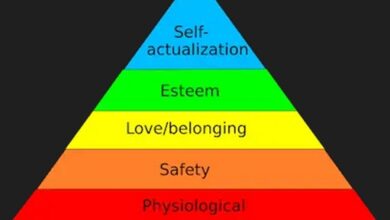What is Symbolic Violence Types and Examples
Symbolic Violence
Much is said, little is understood. Symbolic violence is a well-known term that is widely used in schools, however, many do not see that this type of situation occurs everywhere and several times a day. After all, this is the main characteristic of symbolic violence, it is disguised, masked and subtle. But just why is it so hard to realize that it doesn’t happen? How many types of symbolic violence are there? Many people have gone through complicated situations involving this type of violence and don’t even know it, maybe it’s a good idea to understand more about it, isn’t it?
Knowing the importance of understanding more about this subject, let’s learn more about the types and examples of this type of symbolic aggression.
Symbolic violence: meaning
What is the real meaning of symbolic violence? It is a type of violence that does not fit into the physical context. It is a term that deals with the psychological damage that an individual or institution can do to others. It is closely related to persuasion and manipulation of other people.
In simpler terms it is the persuasion and manipulation of others through power structures or symbols. For example, a police officer who uses his “powers of authority” to impose his desires and beliefs on others.
Behind the meaning of symbolic violence, we need to understand that it has a lot of subtlety and acceptance by people, since it is very masked in our daily lives.
Symbolic Capital
In order to understand symbolic violence and its meaning, it is necessary to understand that symbolic capital exists. This capital is the power that individuals and institutions have to persuade others with their ideals, thoughts and beliefs.
Capital types:
- political or financial
- Social
- Symbolic
Types of symbolic violence
Below we list the types of symbolic violence:
- Jealousy
- Bullying
- Sexual harassment
- moral harassment
- Prejudices
Jealousy
Jealousy is a type since it is a form of control and persuasion of your partner. However, despite being a form of symbolic violence, as well as many disorders in relationships, it is essential that we understand the degree of jealousy in the relationship in question.
Within the context of symbolic violence, it is necessary to realize that, in order to be violence, individuals must somehow “be suffering”. There are some authors who comment on jealousy as a “normal symbolic” form of violence. In order to understand more about this, it is necessary to review the destructive potential of this jealousy with those involved.
Bullying
It is usually done by someone who thinks they have more “power” than the other. In this case, an individual is exercising an “activity” imposing his “authority” (whether it is false or not) so that the other is “punished” or persuaded to something.
Sexual harassment
Sexual harassment is also characteristic of physical violence , however – many men and women have experienced verbal sexual harassment. It would be the type of sexual harassment where there is no physical contact. An example of this type is whistling at someone passing by on the street.
moral harassment
Moral harassment is that humiliating situation that usually occurs within a work environment and as we have already noticed, there is not always physical violence. It is often some individual with some authority power (for example, a boss) who is “abusing” his capital of power to diminish the dignity or well-being of the other.
Prejudice
He is often masked in everyday life, something that does not necessarily border on physical violence. A form of symbolic violence linked to prejudice is, for example, a person who changes his way of treating another just because of his skin color.
Pierre Bourdieu and symbolic violence
Pierre Bourdieu and symbolic violence have an essential connection, as he was one of the most famous sociologists who spoke on the subject. Bordieu addresses the symbolic power of institutions, capital, beliefs and standards. And it is through this symbolism that he relates violence to the social manipulation of another individual.
Pierre Bourdieu was a French sociologist from the 90s, who always reported a lot about symbolism in institutions and people in general. We all exercise some kind of symbolic power over someone or some situation, contrary to what Max Weber believed, because, for him, symbolic violence was solely carried out by the state.
Examples of symbolic violence
Below are some examples of symbolic violence.
Abuse of authority
One of the most famous examples is the abuse of authority. As we can see, this type of symbolic aggression has a direct link with symbolic capital, that is, power. The authorities in our day-to-day life can use their symbolic power to influence and manipulate those who do not have this “status”.
Example: a teacher who abuses his authority to manipulate his students with his opinions.
bullying in schools
Bullying in schools is one of the most famous examples among children and adolescents. Since those responsible do not always perceive symbolic violence since there is not necessarily physical violence involved.
Example: students who exclude a colleague from other activities, making it difficult for him to have access to the same opportunities and rights as them.
Moral harassment at work
Similar to bullying in schools, the situation is similar at work, however, usually bullying at work is something even more masked and subtle. Within the workplace, there may be a connection between abuse of authority and bullying , as a “boss” often uses his symbolic power to alienate his employees.
Symbolic violence in relationships
Within any relationship there is some kind of power relationship. If it’s family relationships we have power relationships like:
- Be father
- be a mother
- Elder or younger brother.
In the case of love relationships, we have implicit and explicit contracts that can establish a certain symbolic power for each side.
Example: imagine a heterosexual couple that has a contract that when one of them is going to leave, they must notify by message – the moment one of them does not notify, the other establishes a certain dominance and can diminish his partner for not having fulfilled the agreement.
Remember that symbolic violence is a delicate subject and despite being subtle and really very masked, not every time there is a relationship of power, there is symbolic violence. Mind you, sometimes people are simply setting limits, setting goals and considering how they feel. Be careful and use common sense not to fall into “mind traps”.



